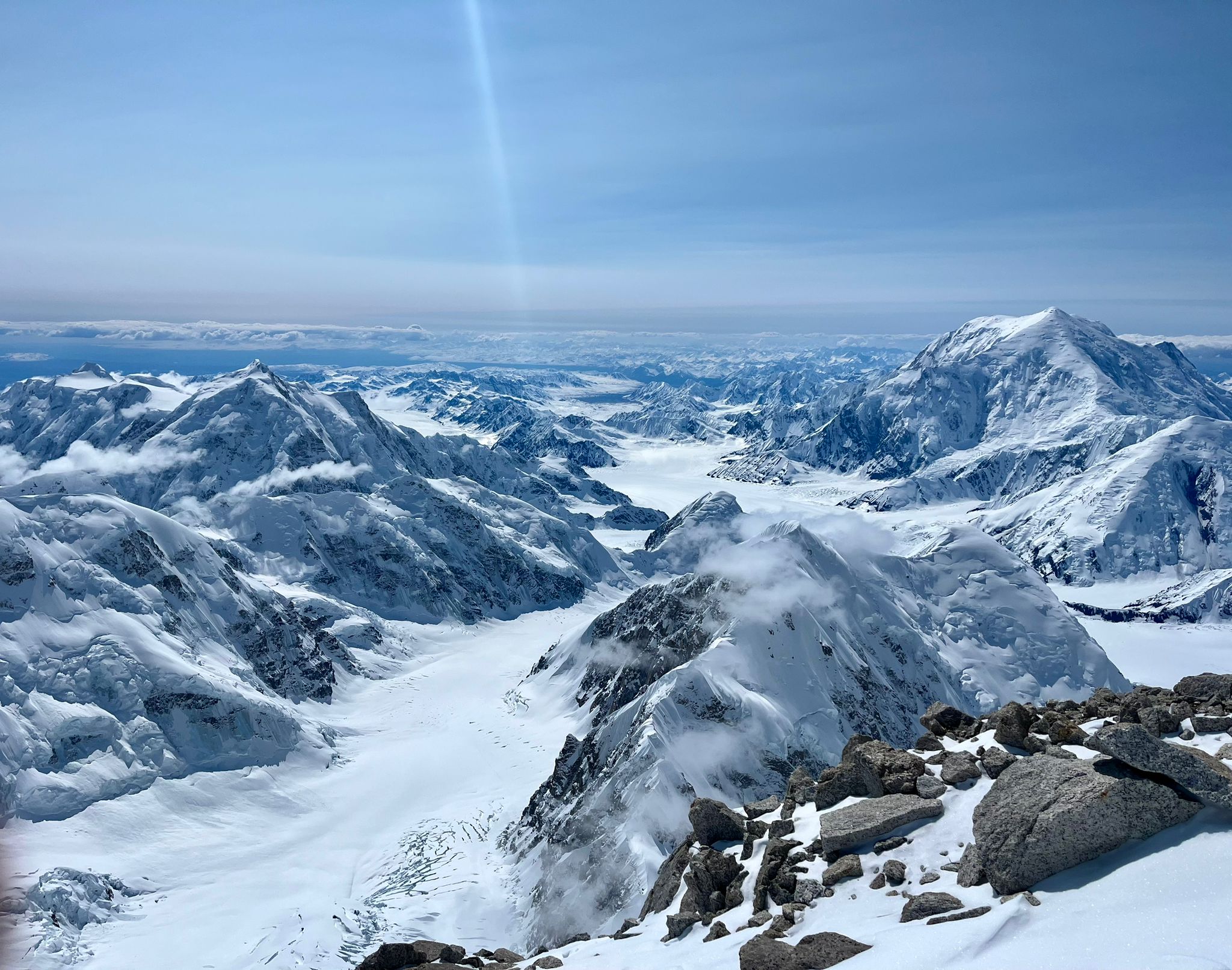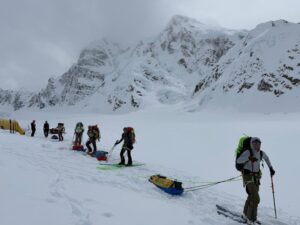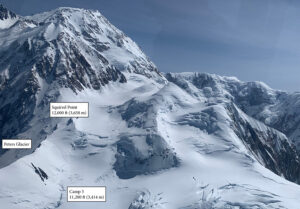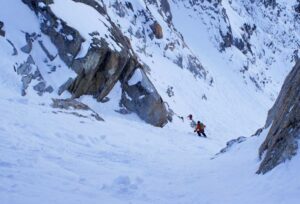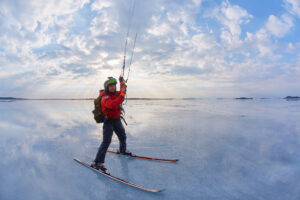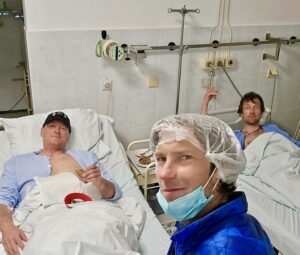On May 28, Max Kilcoyne stood alone above 6,000m. Below him, clouds swirled over the Kahiltna Glacier. Above him, only the upper ridgeline of McKinley and the summit of Mount Foraker pierced the darkening skies. His hands were cold, his phone had just died, and he was alone. But he clicked into his skis and dropped in anyway.
Kilcoyne had just graduated from the University of Colorado Boulder, and now eight days later, he was nearly 5,000km north on the flanks of North America’s highest peak, solo skiing the Orient Express, a 1,000m couloir that slices straight off Mt. McKinley’s upper slopes at angles that touch 50°.
“I don’t have many pictures from this day as I was by myself and my phone died, but I’ll have the memories of that ski forever,” said the young American ski mountaineer.
What followed was a series of ski mountaineering linkups. Over 24 days on the mountain, Kilcoyne soloed and skied the Orient Express, climbed and skied down the Messner Couloir, and then climbed the legendary Cassin Ridge, skiing back down Rescue Gully.
In between, there were other forays high on the mountain. He skied nearly every day of the trip, 21 out of 24, and completed the Cassin just a week after finishing the Messner.
A grind to 14,000 Camp
Kilcoyne arrived in Talkeetna on May 18 with American mountain athletes Anna DeMonte and Jack Kuenzle. The goal was for Kilcoyne to support DeMonte and Kuenzle on a fastest known time (FKT) attempt on McKinley, and then, if all went well, climb the Cassin Ridge. After weather delays grounded the many climbers waiting to fly out to the Kahiltna Glacier, Kilcoyne’s team finally flew on May 21 when the clouds broke.
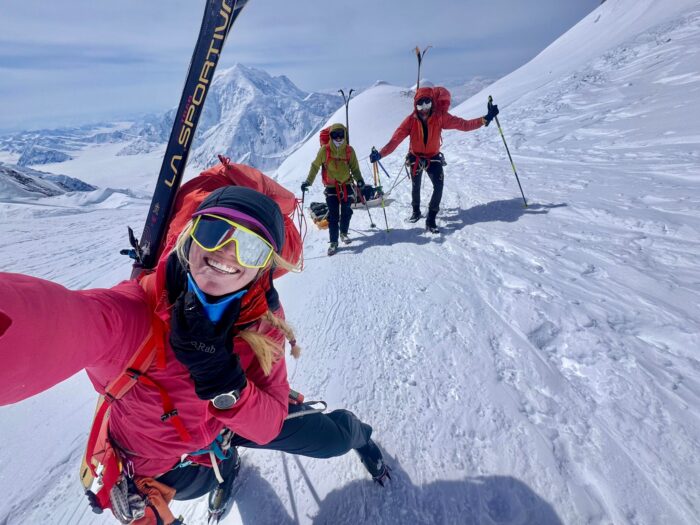
Anna DeMonte, with Max Kilcoyne (left) and Jack Kuenzle in the background. Photo: Anna DeMonte
“The rangers really enjoyed the extra-large bottle of tequila we had given to them the day before,” Kilcoyne joked when asked what may have earned them a seat on the flight out of town.
The next three days were spent dragging heavy sleds up the Kahiltna Glacier to 14,000 Camp, which sits at 4,300m on a plateau below the upper slopes of the mountain. “Any amount of incline with that much weight just feels like death,” said Kilcoyne.
The three-strong team arrived at 14,000 Camp on May 23. That same week, DeMonte and Kuenzle made an early push toward Denali Pass at 5,500m to get some mileage in. Kilcoyne, feeling tired, stayed behind and dug out the cook tent.
Orient Express Couloir (May 28)
On a day when DeMonte and Kuenzle stayed in their tents, Kilcoyne headed up Orient Express Couloir solo. With no fixed lines, no partner, and no certainty about the conditions above, he pushed through deep snow and low visibility, booting into the white void above. By 5,400m, he was out of food. The wind picked up, and he walked backwards up the hill to protect his face.
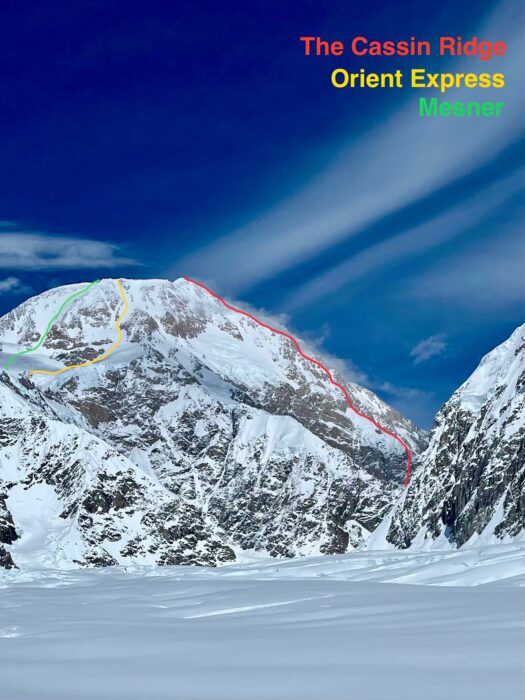
Two of the three lines Kilcoyne skied this season. Photo: Max Kilcoyne
Still, he kept climbing. At 6,140m — just 45m shy of the summit — he decided to stop. The wind chill temperature had dropped, and he knew he needed working fingers to take off his crampons and clip into his skis. He also planned to summit multiple times later in the season.
What followed was a descent in perfect conditions, skiing steep powder, without another soul on the route. “One of the most euphoric skis of my life,” he said. “I got back to camp at 8 pm and couldn’t stop shivering all night but was stoked out of my mind.”
Messner Couloir (June 6)
DeMonte and Kuenzle’s speed record attempt ended on May 29 when DeMonte was injured in a fall while skiing at 4,900m. A week later, Kilcoyne joined Wesley Perkins and Emmett Itoi to attempt the Messner Couloir, a direct line that drops 1,500m from just below McKinley’s summit. No one had skied it yet that season.
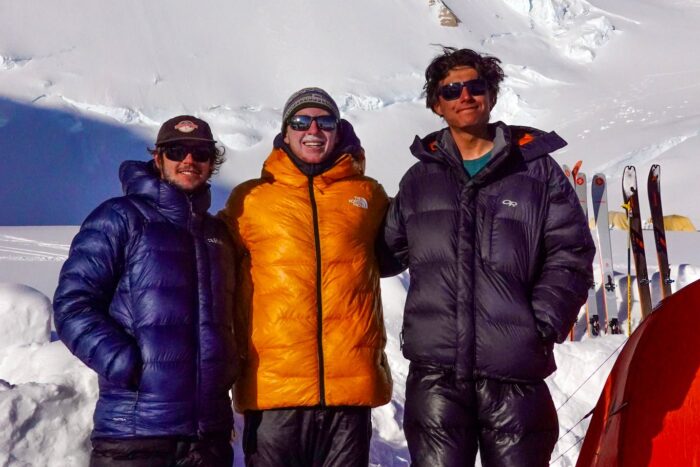
Max Kilcoyne (left) with his new companions. Photo: Max Kilcoyne
The trio climbed the couloir from 14,000 Camp to 5,900m, where Itoi decided to wait, leaving Kilcoyne and Perkins to summit in strong winds. On the way back, they rejoined Itoi and skied back down the Couloir. The snow was stable, and visibility was excellent. “All of 14,000 Camp was watching us as we opened it for the season,” Kilcoyne said.
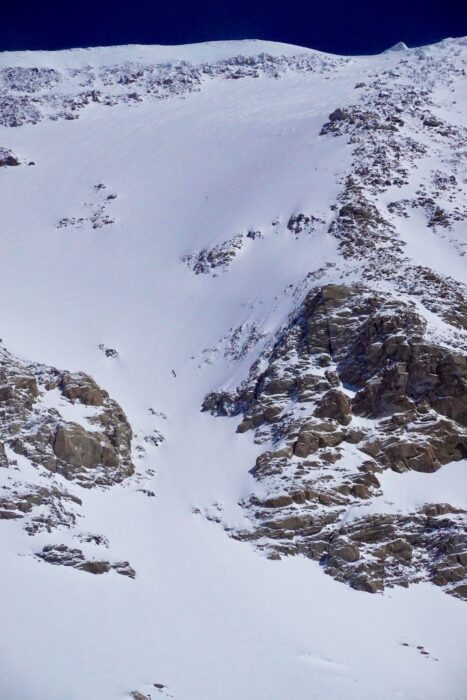
Kilcoyne, Perkins, and Itoi breaking trail up the Messner Couloir. Photo: Max Kilcoyne
“We picked the most notable features from a photo, and then I got to make the first turns down. It felt committing, not really knowing where you are on such a big face, but it couldn’t have gone better.”
Cassin Ridge and Rescue Gully (June 13)
Kilcoyne had long set his sights on the Cassin Ridge. “The Cassin meant the most to me by far. That has been a priority for me for the last two years, and it was amazing to see it come to fruition.”
He and Perkins teamed up again and left 14,000 Camp on June 10, skied the Seattle Ramp to access the base of the route, and climbed light and fast. Night one was spent on a narrow ice ledge. Night two was spent tied to an ice screw on a ledge barely wide enough for one person. One of Kilcoyne’s food bags for the next day tumbled off into the void.
“The hardest thing about the linkup of the Cassin and Rescue Gully was probably just how remote you are and how hard it is to manage your gear in those temperatures. I brought three pairs of gloves, and by the end of day one, all of them were completely soaked and frozen solid. Your ski boots get wet and then freeze; pretty much everything gets wet at some point and then freezes solid. Climbing through some of the cruxes with skis on our backs was also quite difficult,” Kilcoyne noted.
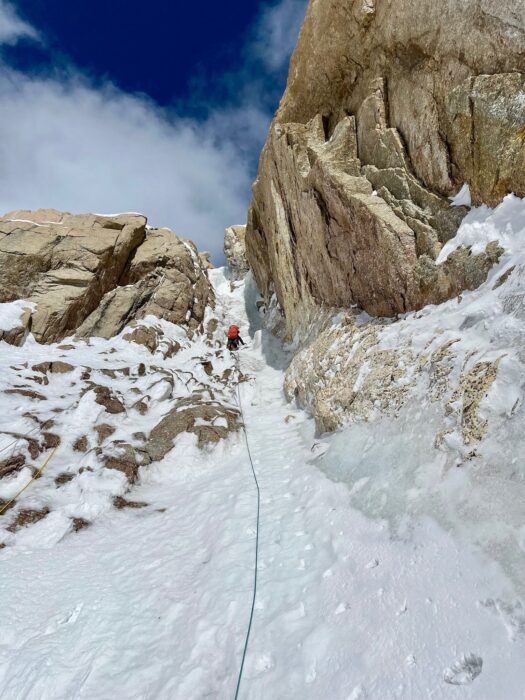
Kilcoyne leading the crux WI4 pitch on the Japanese Couloir on the Cassin. Photo: Max Kilcoyne
The route tested their mixed climbing skills, with M4/M5 terrain in places, simul-climbing with skis on their backs, and trail breaking in deep snow. On June 13 in the evening, they topped out on the Kahiltna Horn and skied around 1,800m back to 14,000 Camp via Rescue Gully.
“We topped out Kahiltna Horn at 8:33 pm, put on all our layers, put skis on, and ripped down as fast as possible. Neither of us had any interest in going the last 150 feet on the ridge to the true summit.”
A skier had died on Rescue Gully in an avalanche a few days beforehand, and the pair were understandably apprehensive about skiing the gully when fatigued. Regardless, they managed the descent without any issues.
A successful first trip
The trip was not without hardship. DeMonte suffered a bad leg injury and had to be evacuated by helicopter. Kuenzle left to assist her. That left Kilcoyne alone, adapting to new partners and plans. But the mountains had more to offer, and he kept skiing.
“I can’t speak to how rare it is to do what I did this season on Denali as I am new to the Alaska scene,” he says, before adding he saw “no one else ticking multiple ski lines on Denali this year.”
For Kilcoyne, this first trip to McKinley brought together the many alpine tools he has built over time. From trail running and ski mountaineering as a kid in Boulder, to mixed climbing all winter to prepare for McKinley’s alpine terrain, it all came together in one highly productive season.
